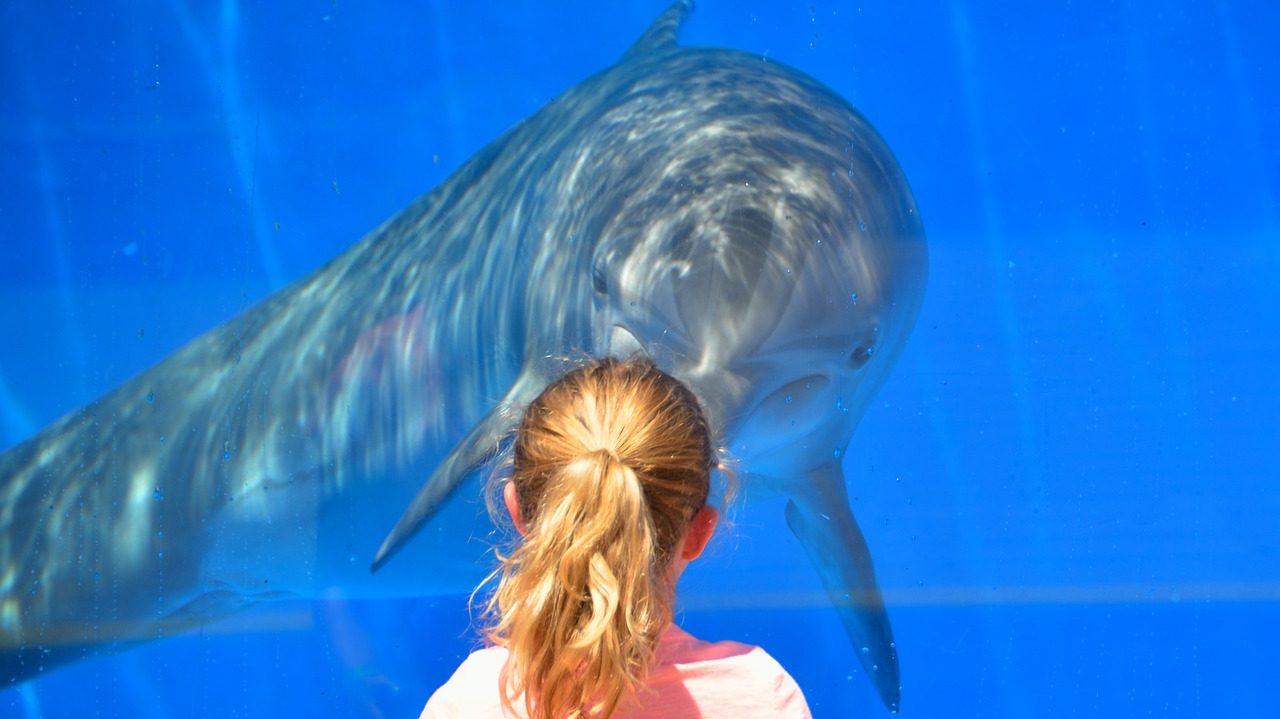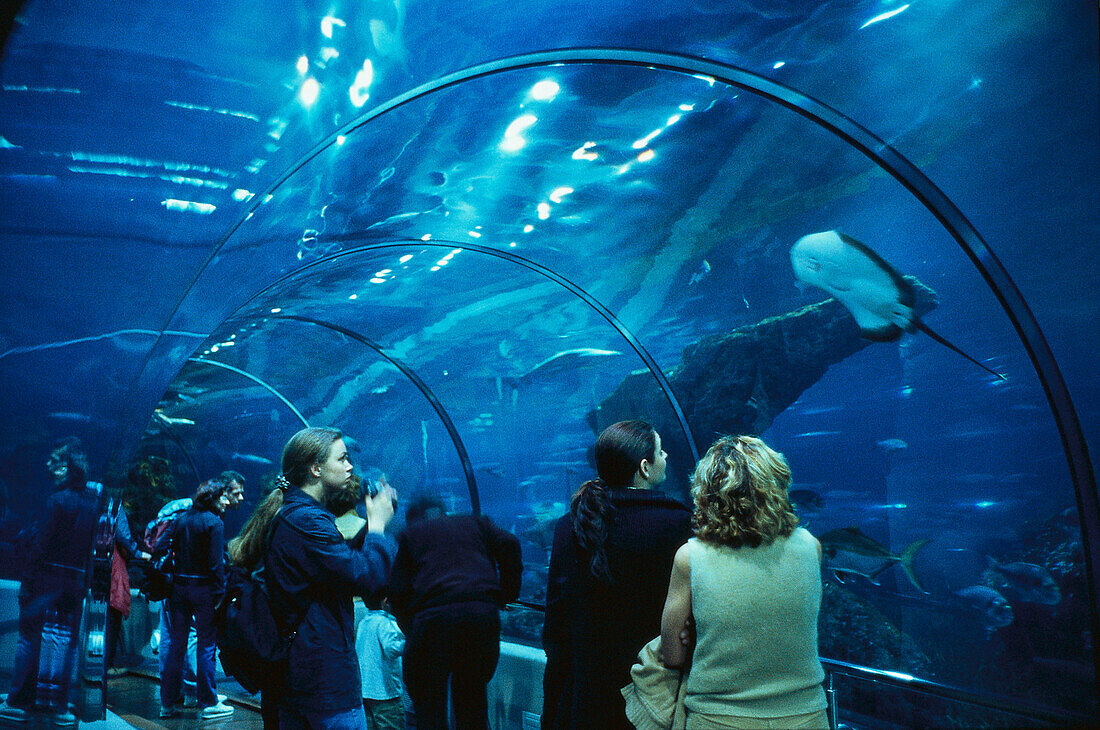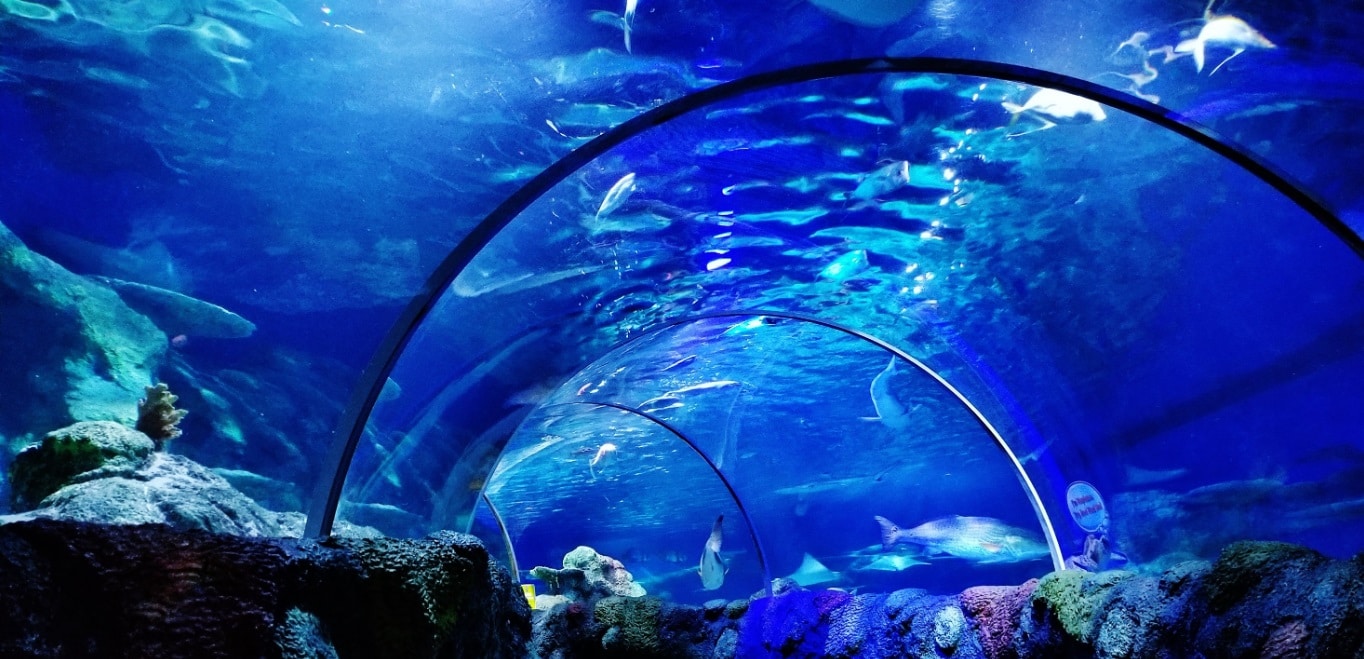The best aquariums in the world share the same magical properties: wondrous tunnels of cerulean blue; immense enclosures home to mysterious and intelligent sea creatures; expert staff working to the highest animal welfare standards; and,
The best aquariums in the world share the same magical properties: wondrous tunnels of cerulean blue; immense enclosures home to mysterious and intelligent sea creatures; expert staff working to the highest animal welfare standards; and, of course, cute but questionably priced gift shop toys.
The world’s best aquariums are committed to education, preservation, and scientific research, both internationally and within their local waters. Discover some of the best aquariums in Europe with a deep dive into the most encapsulating water kingdoms accredited by regional or international organizations.
1. Oceanogràfic de Valencia
Valencia’s immense Oceanogràfic is the largest aquarium in Europe, spread across 1,200,000 square feet, just a stone’s skip from the Balearic Sea.
It confidently bills itself as: “a first-rate scientific, educational, and recreational center”. Its habitats, housed in nine underwater towers, represent all the world’s major ecosystems, from the frozen to the temperate and tropical.
Visitors to L’Oceanogràfic can wander between Bermuda and the Canary Islands along the longest aquarium tunnel in Europe, or peer into the crystal-clear home of an inquisitive family of Belugas – the only blood-related group in Europe.
The Mysteries of the Sea exhibit hides creatures renowned for their beauty, oddness, or unique scientific characteristics. Perhaps the most fascinating resident here is the Atlantic horseshoe crab. These blue-blooded, nine-eyed arthropods are actually more akin to spiders and scorpions than crabs, and the hemocyanin in their blood is vital in the field of medicine. It may even have a role to play in the coronavirus vaccine.
The Oceanogràfic carries out numerous marine conservation projects locally and further afield, including studies on sustainable fishing and the protection of bottlenose dolphins, as well as the work undertaken by its Recovery Centre for Marine Fauna.

2. Nausicaá – Centre National de la Mer
How could you not want to visit an aquarium resembling an enormous manta ray? Nausicaá isn’t just an architectural wonder, either. With a huge diversity of sea life and a core educational mission, Nausicaá is one of the best aquariums in the world, focusing on the relationship between mankind and the sea.
Almost 60,000 charismatic creatures call Nausicaá home, from lionfish to sea lions, and from leopard sharks to tiger sharks and small-spotted catsharks. We’ll make a note to ask why so many are named after cats.
There are rare fish who illuminate the dark with torch-like organs, and majestic rays who move as if flying through the deep. And the jellyfish! Is it even possible to watch these gelatinous gems glide around without feeling a little bit awestruck?
Boasting the largest tank in Europe, 1,600 different species are on show across two huge exhibits: Journey on the High Seas, and Mankind and Shores.
The aquarium is also involved in conservation work far from its catchment area, helping to reconstruct the coral reef in the Maldives, and working to protect the African penguin in South Africa.
3. Lisbon Oceanarium
Oceanário de Lisboa is the most popular cultural attraction in Portugal and respected as one of the best aquariums on Earth. A visit to the Oceanarium is a dreamy journey through four incredible zones, which replicate the rocky coastline of the North Atlantic, the icy tundra of the Antarctic, the kelp forests of the Pacific, and the coral reefs of the Indian ocean – not bad for €19!
The aquarium is full of species you’ve never heard of: the bignose unicornfish, the fire goby, the old wife, the wide-eyed flounder, the nursehound, the splendid garden eel, and plenty more. Add to this the peculiar coral, rare sharks, limb-regenerating salamanders, deadly poisonous frogs and elegant puffins, and you can see why the aquarium is such a hit.
Some of the Oceanarium’s biggest draws are the array of temporary exhibitions it puts on each year, from climate change-focused exhibits to spectacles that would be at home in a famous art gallery.
The aquarium is involved in breeding programs in partnership with the European Association of Zoos and Aquaria. It also sponsors various conservation projects outside its walls, such as the Angelshark Project, which aims to protect the critically endangered shark, and a program aimed at safeguarding threatened sea turtles in São Tome and Príncipe.

4. The Deep
Hull, in England’s North East, almost certainly isn’t the first place you think of when it comes to the world’s greatest aquariums. But East Yorkshire’s small, award-winning, proudly non-profit, and conservation-first aquarium is one of the best.
Across nine zones, visitors can see sharks, stingrays, gentoo penguins, tropical fish, poisonous frogs, and much more. One of the exhibits is called Slime, and, rather than being full of flailing politicians, it’s dedicated to creatures who depend on goo to survive – clownfish, eels, and the elusive scribbled pipefish.
The Deep also provides sanctuary for the UK’s only pair of green sawfish, which are critically endangered in the wild. Sawfish are just one of the species benefiting from The Deep’s conservation focus.
It contributes to European Breeding Programmes, with success stories including zebra sharks and Madagascan killifish. It also supports conservation projects around the world, and has worked to protect sawfish in Africa, penguins in the Galapagos Islands, sea turtles in the United States, coral in Belize, and, closer to home, Tansy Beetles in York.
5. National Aquarium Denmark
The largest aquarium in Northern Europe allows you to drift around the waters of the world without ever leaving the cool climes of Scandinavia. See warty stonefish, electric eels, snapping turtles, and birds from the Faroe Islands. The aquarium is also home to a rather intelligent giant Pacific octopus with 2,000 suction cups. It can even unscrew the lid of a jam jar – remember that next time you’re struggling!
And it’s not just the teeming tanks that fascinate. Blue Planet provides visitors with a noted digital exhibition that allows children and inquisitive adults alike to learn about the subtleties and intricacies of sea life through interactive exhibits.
On the conservation front, Den Blå Planet joins forces with researchers, fellow aquariums, NGOs, and initiatives in the Nordic region and beyond. Its collaborations have included revealing research studies on the Greenland shark, a mysterious species that scientists believe can live for as long as 250 to 500 years in the ice-cold waters around Greenland and Canada.

